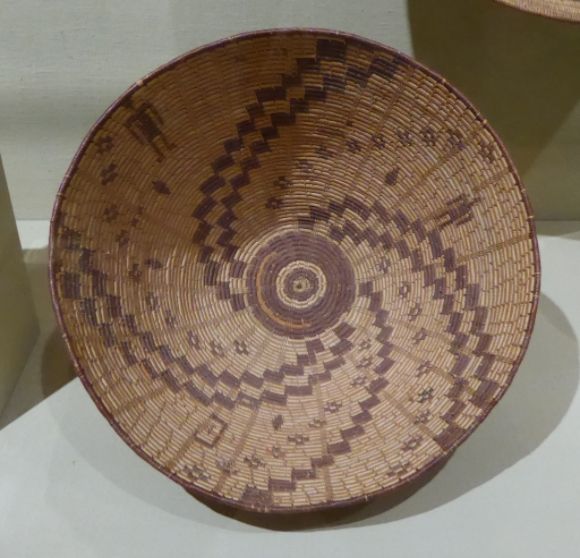Death Valley seems to be an inhospitable place, but it has been home for the Timbisha Shoshone for thousands of years. Death Valley is called tumpisa by the Timbisha Shoshone. The name means “rock paint” and refers to the red ochre paint that can be made from a type of clay found in the valley. The name Timbisha means “Red Rock Face Paint.”
The Shoshone language belongs to the Numic group of the large Uto-Aztecan language family. The homeland of the Numic-speaking groups in the Great Basin is generally seen as the Death Valley area. Linguistic data seems to suggest that these groups began their migrations from this area into other parts of the Great Basin about 1,000 to 1,500 years ago. Catherine and Don Fowler, in an article in the Utah Historical Quarterly, report:
“Archaeological and linguistic evidence indicates that the Numic-speaking peoples spread across the Great Basin sometime after A.D. 1000, displacing or replacing the earlier carriers of the Fremont and Virgin Branch Anasazi cultures in Utah, eastern Nevada, and Northern Arizona.”
Among the Timbisha in the Death Valley area, the bands were quite small—15 to 20 people—and traveled on annual rounds of hunting and gathering.
In Portland, Oregon, the Portland Art Museum has a display of Timbisha (also known as Panamint) Shoshone basketry. According to the display:
“This group is historically known for some of the finest, tightly-coiled Native basketry on the continent.”
In traveling their annual rounds, the Timbisha used baskets for transporting food and belongings between their camps. As non-Indian tourists discovered Death Valley, the Timbisha baskets soon became collectors’ items and the weavers began making baskets for this market. The Portland Art Museum display reports:
“For Panamint and other American Indian weavers, adapting utilitarian baskets to saleable ones preserved Native basket making techniques and provided much needed income for many families still trying to live a traditional life.”
 Shown above is a basket made about 1920. It is made from willow, desert bulrush, and devil’s claw.
Shown above is a basket made about 1920. It is made from willow, desert bulrush, and devil’s claw.
 Shown above is a basket made about 1930. It is made from yucca and bulrush.
Shown above is a basket made about 1930. It is made from yucca and bulrush.
 Shown above is a basket made about 1920. It is made from willow, devil’s claw, and yucca root.
Shown above is a basket made about 1920. It is made from willow, devil’s claw, and yucca root.
 Shown above is a basket made about 1920. It is made from willow, desert bulrush, devil’s claw seed pod, and juncus.
Shown above is a basket made about 1920. It is made from willow, desert bulrush, devil’s claw seed pod, and juncus.

 Shown above is a work basket made about 1880. It is made from willow, desert bulrush, and devil’s claw.
Shown above is a work basket made about 1880. It is made from willow, desert bulrush, and devil’s claw.
 Shown above is a basket made about 1850. It is made from willow, yucca root, and devil’s seed pod.
Shown above is a basket made about 1850. It is made from willow, yucca root, and devil’s seed pod.


In 1982, the Timbisha Shoshone obtained federal recognition from the United States government. They were one of the first tribes to obtain federal recognition through the Bureau of Indian Affairs federal acknowledgement process.


